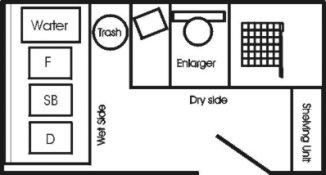markandrew
Member
hi
i have some room in my cellar which i'm intending to convert into a darkroom, but it's quite small (about 3x1.5 meters) and has no water supply. my dad has an enlarger which he is willing to give me, but most of the other equipment i'll need to buy new (or used).
i'm wondering what options there are for the develop/stop/fix/wash cycle which might suit my circumstances - i've only really used plain old open trays of chemicals (for the first 3 stages) and a sink/large tray of water for the wash, before, so i'm not sure what other options might be available. our kitchen is at the top of the cellar stairs so i can at a push use the sink there and keep water in buckets, but if there are more 'enclosed' or space-friendly options they would probably be more suitable.
print sizes i'd be looking for is probably only around 10x8 - if larger is feasible that's great but not absolutely necessary.
any advice welcomed!
thanks
mark
i have some room in my cellar which i'm intending to convert into a darkroom, but it's quite small (about 3x1.5 meters) and has no water supply. my dad has an enlarger which he is willing to give me, but most of the other equipment i'll need to buy new (or used).
i'm wondering what options there are for the develop/stop/fix/wash cycle which might suit my circumstances - i've only really used plain old open trays of chemicals (for the first 3 stages) and a sink/large tray of water for the wash, before, so i'm not sure what other options might be available. our kitchen is at the top of the cellar stairs so i can at a push use the sink there and keep water in buckets, but if there are more 'enclosed' or space-friendly options they would probably be more suitable.
print sizes i'd be looking for is probably only around 10x8 - if larger is feasible that's great but not absolutely necessary.
any advice welcomed!
thanks
mark












